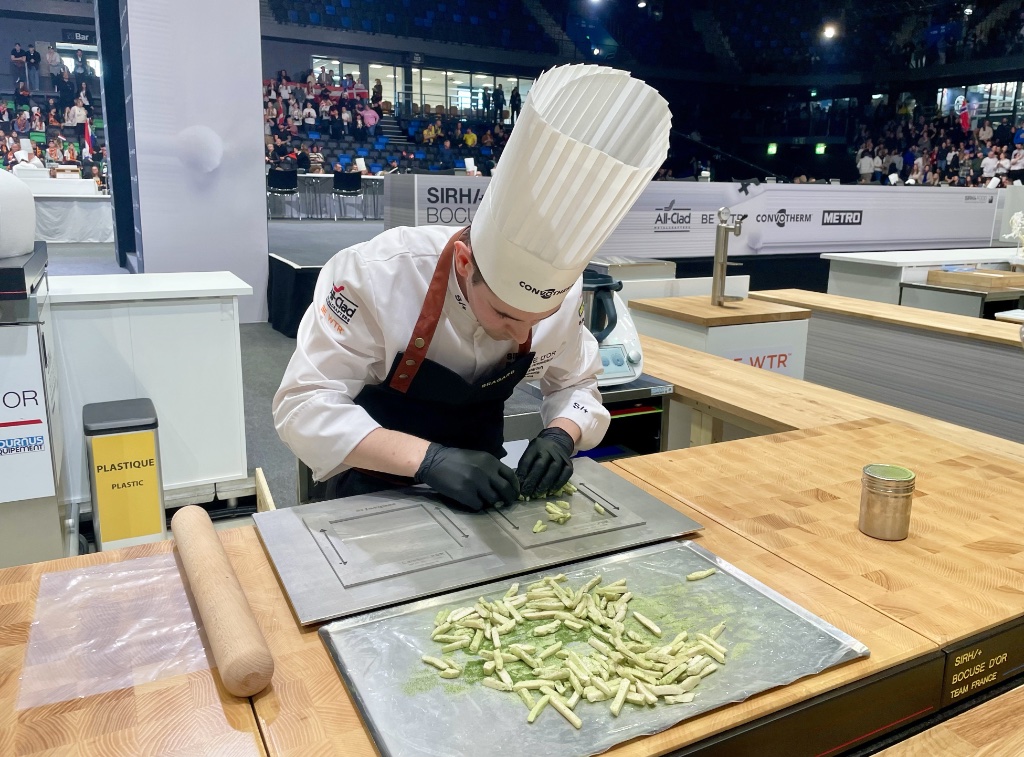
Forget about sports – this is my kind of Olympics: the Bocuse d’Or, one of the world’s leading chef’s competitions. If you think TV cooking contests like “Top Chef” and “MasterChef” are tough, you haven’t seen anything yet.
Last week, I had the chance to follow the progress of the French team at Bocuse d’Or Europe, held in Trondheim, Norway, on March 19-20. Led by Paul Marcon (not to be confused with Macron, the French president), a reserved but confident 28-year-old, assisted by Camille Pigot and coached by chef Christophe Quantin, the team had won the Bocuse d’Or France in September 2023 to qualify for the European trials.
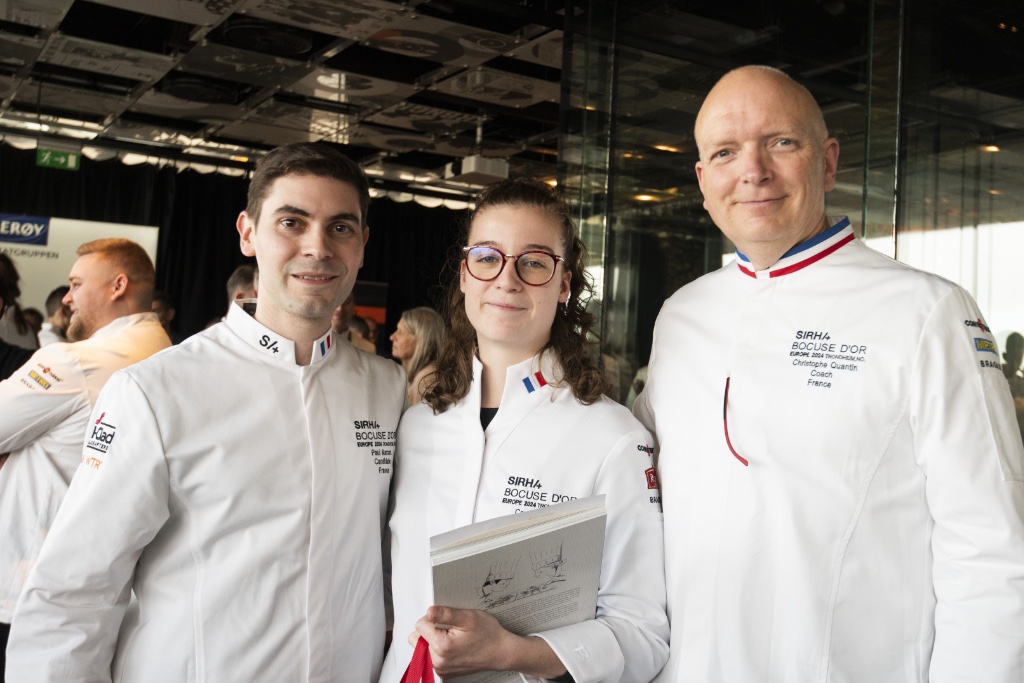
When they are not training for Bocuse d’Or competitions, Marcon and Pigot work alongside the former’s father, three-star chef Régis Marcon, and his brother Jacques, in the family-owned Restaurant Marcon in Saint-Bonnet-le-Froid, France. Competing in the Bocuse d’Or is something of a family tradition: Régis won the top prize himself in 1995.
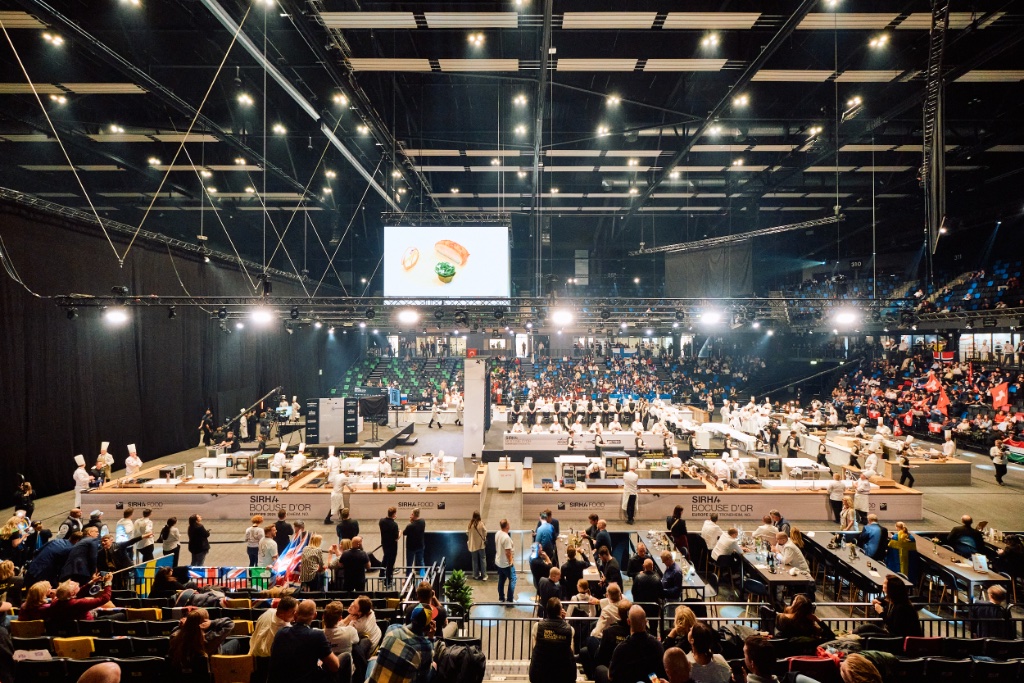
Twenty teams from all over Europe, including Türkiye, competed in Trondheim, following a complex set of rules that have been revised several times since the competition was founded in 1987 by the celebrated chef Paul Bocuse.
Each team has to make two presentations to the tasting jury (composed of 20 well-known chefs): one plated (referred to as “theme on plate”), the other on a decorative platter (“theme on platter”). Some ingredients are imposed at each contest: in the case of Trondheim, the platter had to contain certain local ingredients – skrei, a type of local cod, scallops from Frøya, Norway – and three condiments to go with them: two of them vegetable-only and one using Norwegian stockfish (slow-dried cod).
The plate had to incorporate reindeer meat and Linie aquavit (the caraway- and star-anise-flavored Norwegian spirit). In addition, a typical product from the contestant’s home country had to be used. For his, Marcon chose mushrooms, “a precious memory from my childhood.”
The French team found itself at a slight disadvantage when they learned that they would have to use reindeer in their themed plate, since the meat of Santa’s lovable helpers is not easily available in France. They worked with a game meat that resembled reindeer, but when they finally got hold of reindeer, they realized that their recipes had to be changed at the last minute to suit it. Marcon was not entirely unfamiliar with reindeer, however, having worked for two years at Aira, a restaurant in Stockholm.
The analogy with a sporting event is not as spurious as it sounds. As soon as they learn what the required ingredients will be, three months ahead of the contest, the teams competing in Bocuse d’Or Europe leave their day jobs and go into intensive training, creating recipes and fine-tuning the complicated choreography of making their elaborate gourmet dishes in the five-and-a-half hours allowed.
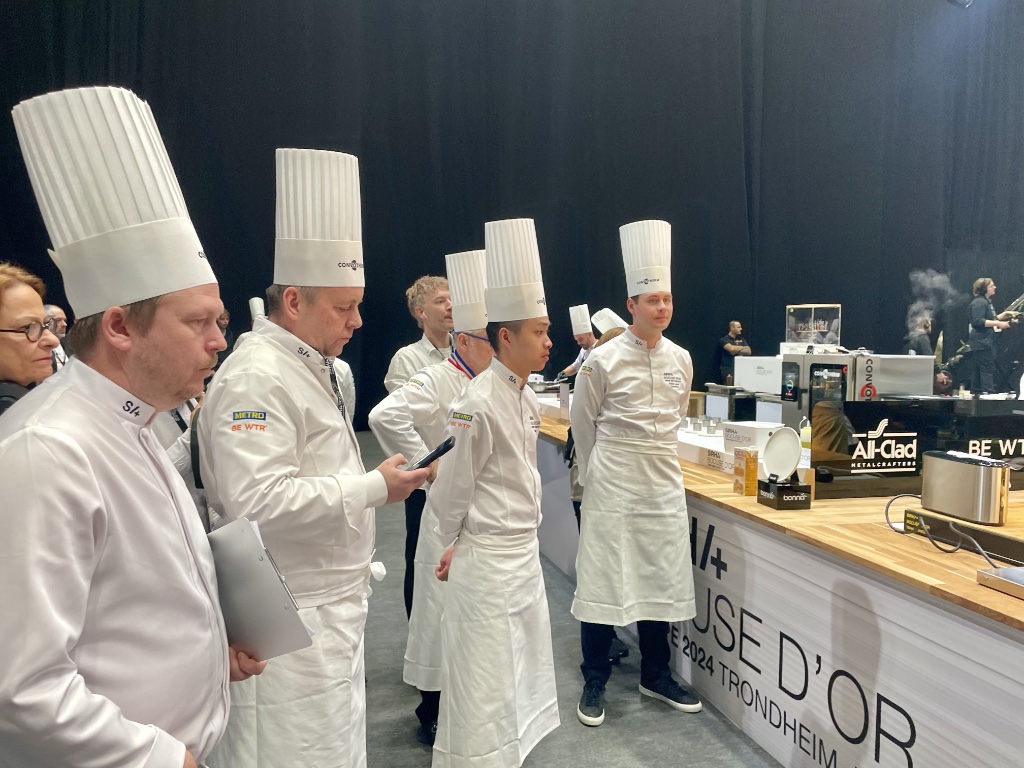
And, as at sporting events, every move made by the contestants during the competition is closely watched not only by their team coach (there to ensure that they do the right thing at the right moment), but also by five roving kitchen judges (to confirm that the kitchen standards are up to snuff and that there is no trickery – in the past, contestants have been known to sneak in pre-prepared ingredients).
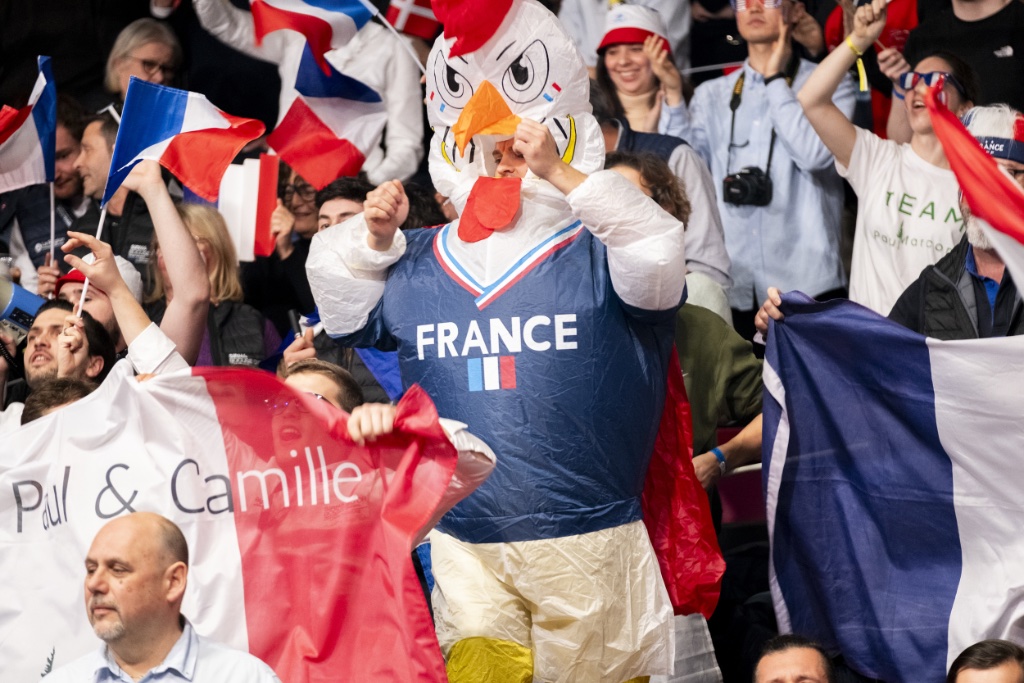
They are also watched by the screaming, singing, flag-waving, costumed fans in the stands who make as much noise as they possibly can to encourage their team.
For five-and-a-half hours, the chefs and their assistants never stop. It’s dizzying to watch as they run back and forth to fetch ingredients, work on them and put them in the oven or the fridge before cleaning the work surface (cleanliness counts!) and starting work on a different ingredient, peeling, chopping, juicing, blending, etc.
Each ingredient is subjected to incredibly painstaking processes. I watched Marcon cutting scallops into tiny strips and carefully arranging them into neat rows before freezing them and later spilling them out, sprinkling them with dill powder and arranging them again into a tightly packed “mosaic.”
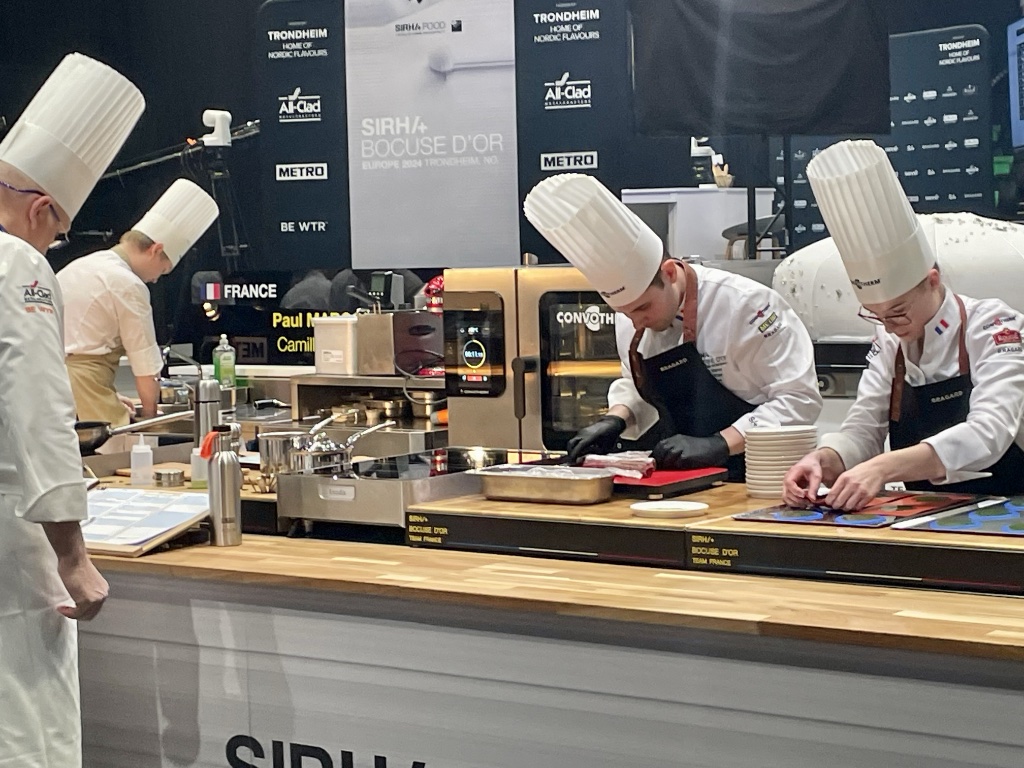
During that entire time, the chefs never even look up from their work, seemingly heedless of the intense clamor produced by the fans who have traveled to Trondheim to encourage them (“We like hearing them,” Marcon told me later. “They are our friends) and the general pandemonium in the cavernous hall.
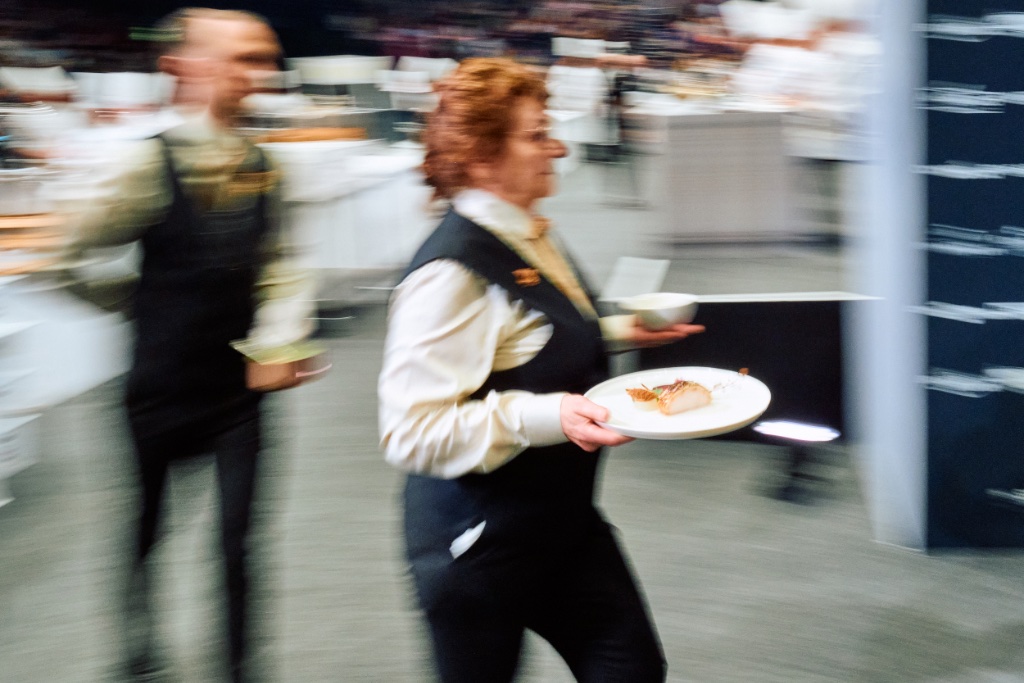
Ten teams per day simultaneously prepared their plates and platters in separate, fully equipped kitchens. The start and stop times for each team are staggered so that the jury will have time to taste each one’s preparations, delivered simultaneously to them by a team of uniformed servers, before the next team’s dishes arrive.
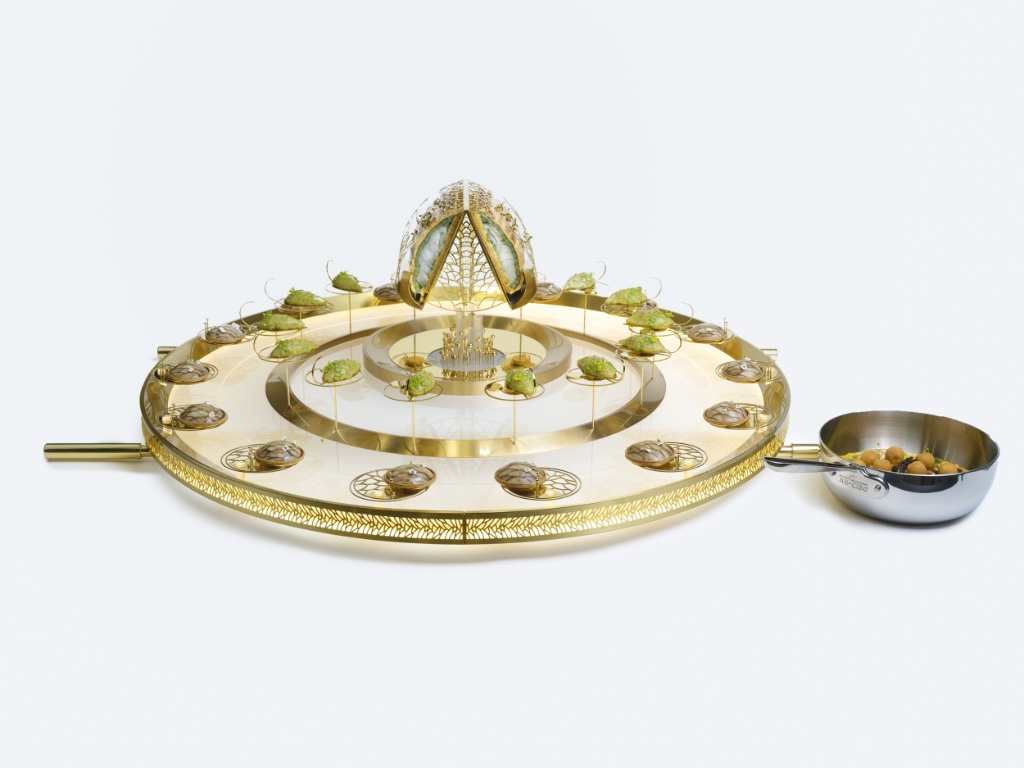

One more similarity to sporting events: the number of sponsors’ logos emblazoned everywhere, and even embroidered onto the chef’s jackets: among them American premium cookware maker All-Clad, Bragard workwear for restaurant and hotel staff, BE WTR water filters, Pommery champagne and many others.
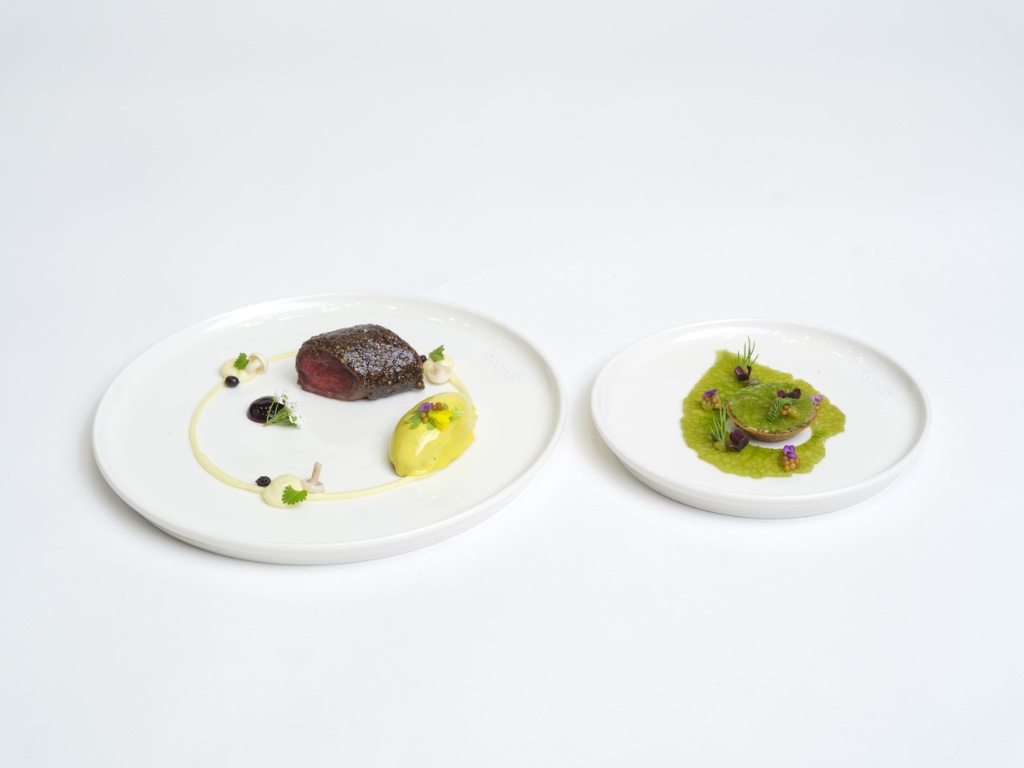
The question looms: did France win? These kinds of events seem to be patterned on the tropes of TV reality shows, where it is the norm to build up fake suspense and make the audience wait before announcing the winners. They must have influenced me. The answer is … (unnecessarily long pause) … no, France did not win.
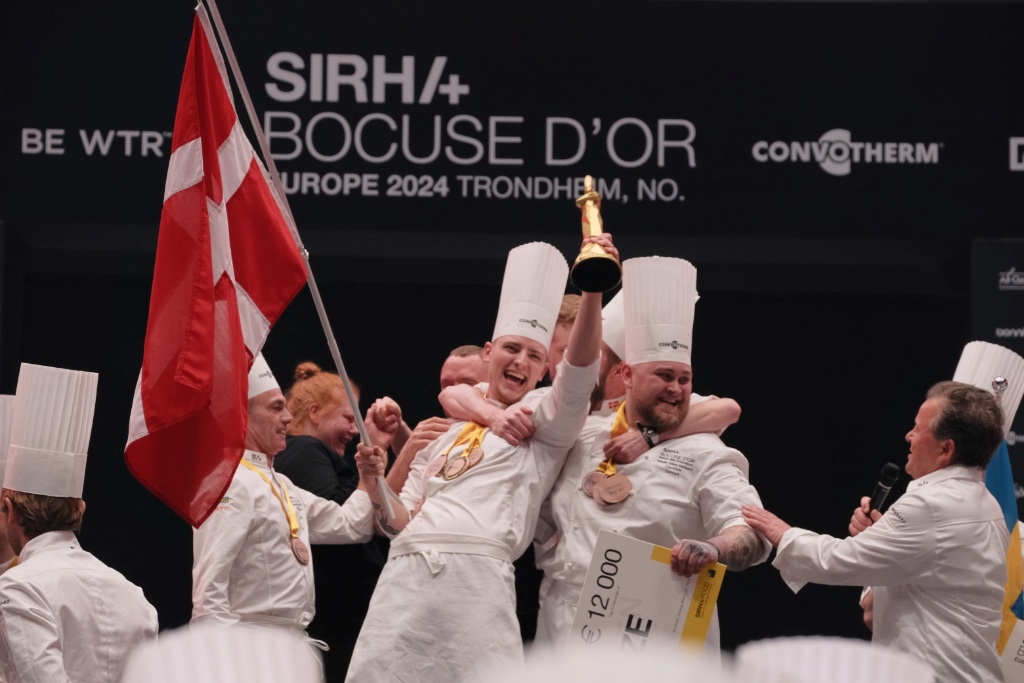
The Nordic countries swept the top awards (statuettes of Paul Bocuse in his chef’s gear), with the Bocuse d’Or Europe gold going to Team Denmark, led by Sebastian Holberg Svendsgaard. Silver was awarded to Gustav Leonhardt of Sweden and bronze to Havard Werkland of Norway.
France came in fifth, but as one of the top 10 will have another chance for the big prize at the final competition in Lyon on January 26-27, 2025, which will bring together the leading teams from the four regional competitions in Europe, Asia, Africa, and the Americas.
While Marcon was disappointed, he was philosophical and determined. “The main thing is to have competed,” he said. “We know what went wrong, and we know how to fix it. We’ll start over with new recipes.”
The next step in the runup to the grand finale in January will be the Bocuse d’Or Americas on June 12-13, 2024, in New Orleans, where 12 candidates (Argentina, Bolivia, Canada, Chile, Colombia, the Dominican Republic, Ecuador, Guatemala, Mexico, Uruguay, the United States and Venezuela) will have to whip up dishes incorporating rack of wild boar, alligator sausage and gruel (!). Training has already begun.
Chefs, on your marks.
Favorite